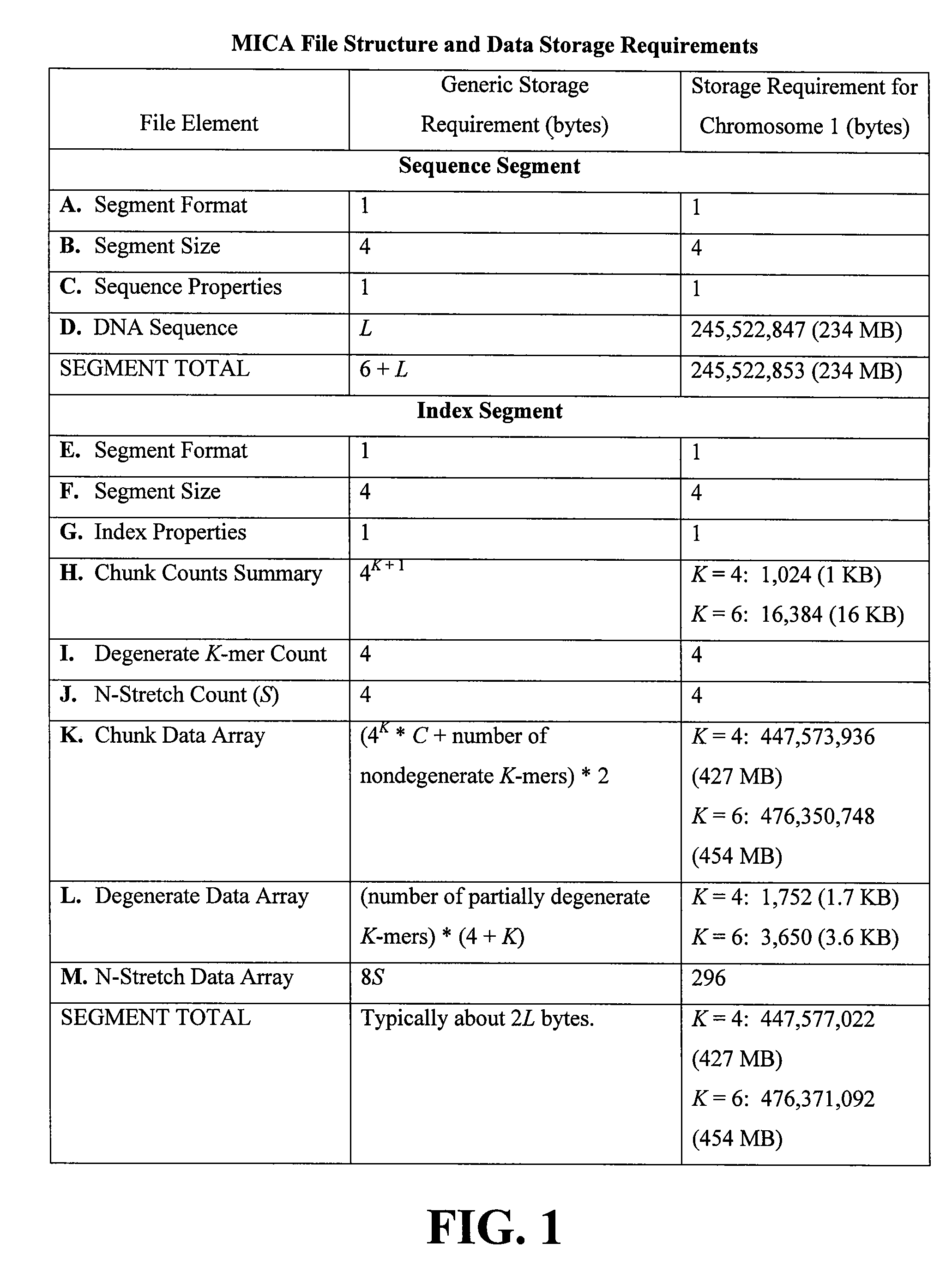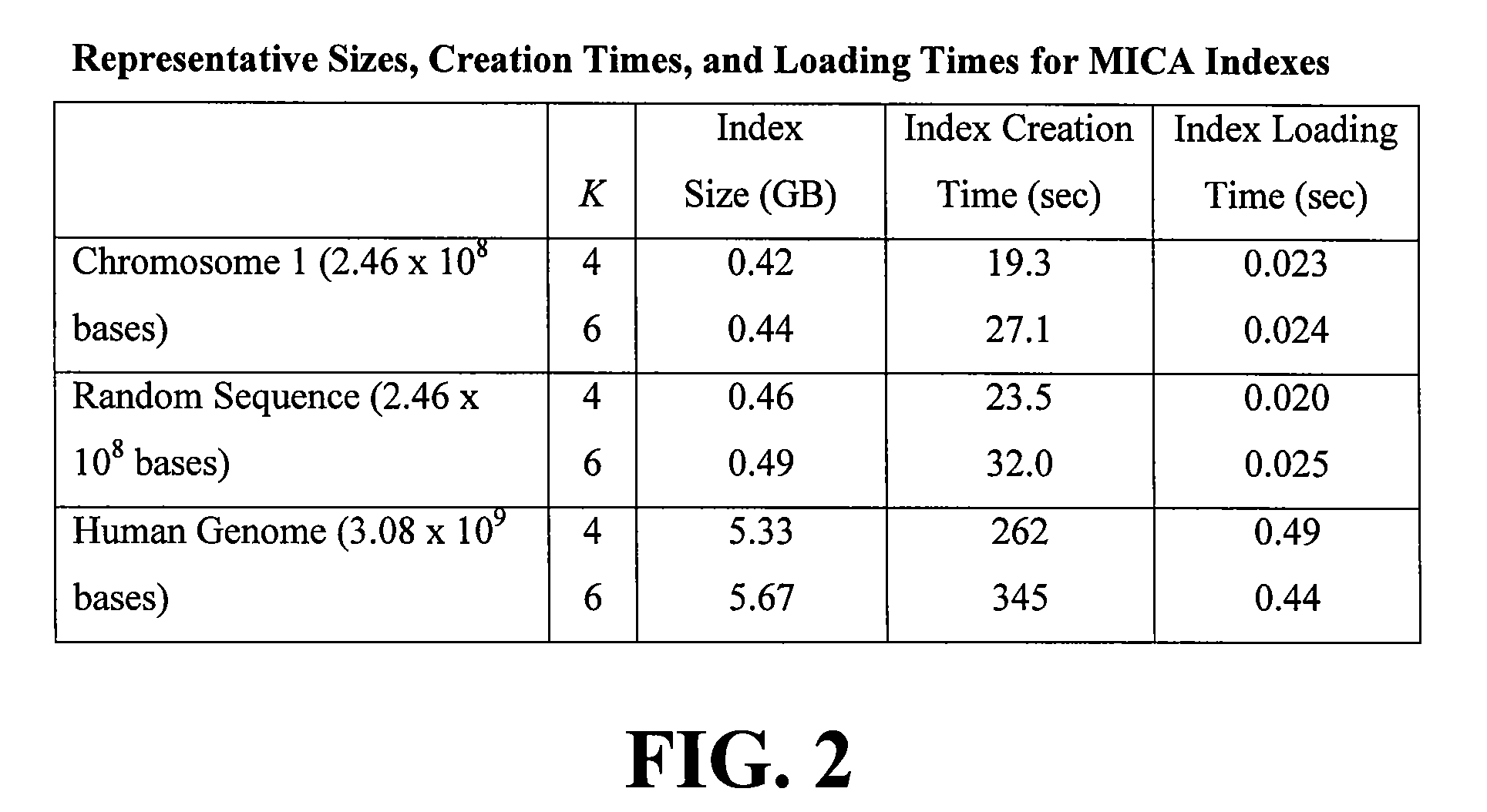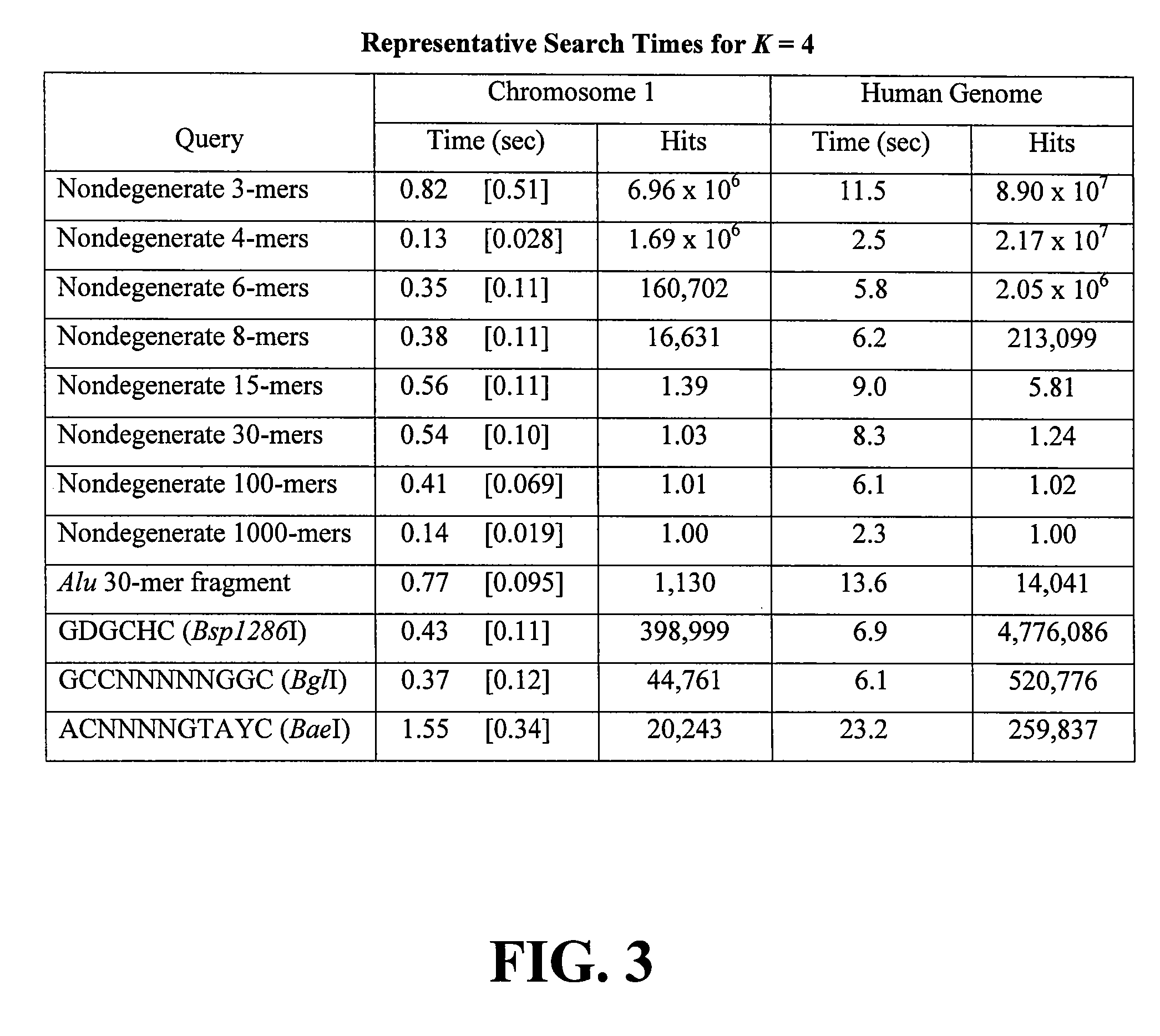Method for indexing nucleic acid sequences for computer based searching
- Summary
- Abstract
- Description
- Claims
- Application Information
AI Technical Summary
Benefits of technology
Problems solved by technology
Method used
Image
Examples
examples
[0048]MICA was coded in C++ and tested on a 2.5-GHz G5 Macintosh running OS X (10.4, Tiger) with 2.5 GB of RAM. As subject data the May 2005 Ensembl release of the human genome was used (Ensemble Genome Browser—http: / / www.ensembl.org / index.html), comprising 3.08 gigabases in 25 files representing the linear chromosomes 1-22, X, and Y, plus the circular mitochondrial chromosome.
[0049]Indexing Performance
[0050]For a server application, a large index may be acceptable if sufficient memory is available, and slow indexing is acceptable because the index is created once and then used indefinitely. For a desktop application, smaller indexes are desirable because they occupy less disk space. Moreover, versatility is increased if the index can be created and updated rapidly, because this feature facilitates the analysis of new sequences and the modification of existing sequences.
[0051]FIG. 2 shows representative MICA index sizes and indexing times. The sequences of chromosome 1 and the 25 ch...
PUM
 Login to View More
Login to View More Abstract
Description
Claims
Application Information
 Login to View More
Login to View More - R&D
- Intellectual Property
- Life Sciences
- Materials
- Tech Scout
- Unparalleled Data Quality
- Higher Quality Content
- 60% Fewer Hallucinations
Browse by: Latest US Patents, China's latest patents, Technical Efficacy Thesaurus, Application Domain, Technology Topic, Popular Technical Reports.
© 2025 PatSnap. All rights reserved.Legal|Privacy policy|Modern Slavery Act Transparency Statement|Sitemap|About US| Contact US: help@patsnap.com



